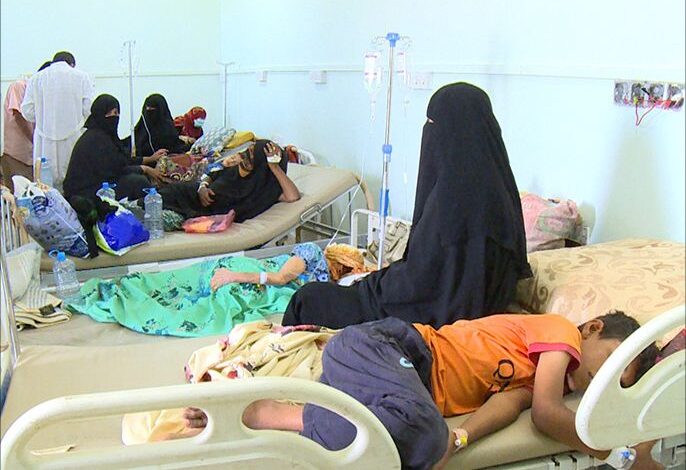Floods Fuel Rapid Spread of Cholera in Yemen

Yemen Monitor/Newsroom
The International Rescue Committee has warned of a worsening humanitarian crisis in Yemen as ongoing floods, which began in March and intensified in July and August, continue to devastate numerous governorates.
According to a report released by the committee, the floods have displaced tens of thousands of families, destroyed critical infrastructure, and fueled the rapid spread of cholera.
The report noted that the floods have severely affected the governorates of Hodeidah, Hajjah, Marib, Saada, and Taiz, with nearly 268,000 individuals (38,285 families) impacted as of last month, according to reports from the Office for the Coordination of Humanitarian Affairs.
Heavy rains, which are expected to continue through September, have caused widespread destruction of homes, farmland, and infrastructure, further restricting access to food – an issue already plaguing more than 17 million Yemenis due to conflict, economic decline, and soaring food prices, all exacerbated by the climate crisis.
In Taiz alone, an estimated 70 to 100% of farmland has been destroyed. While rainfall has subsided in September, the risk of additional flash floods remains high due to already saturated land and poor drainage systems.
Isaiah Ogola, Acting Country Director for the International Rescue Committee in Yemen, said, “Yemen is facing a crisis on multiple fronts – ongoing conflict, severe flooding, and now a rapidly spreading cholera outbreak across many governorates.”
He emphasized that people’s lives are directly at risk, and the destruction of water and sanitation facilities is likely to exacerbate the spread of disease.
The committee stated that in response, it has launched emergency operations in the hardest-hit areas of Hajjah, Hodeidah, Al Mahwit, and Taiz, providing cash assistance to nearly 2,000 affected families.
It added that the initial phase will focus on meeting immediate needs, with further assessments planned to guide potential interventions in the water and sanitation sector, such as establishing emergency water points and latrines.
The committee, in collaboration with its partners, conducted assessments in the affected areas, revealing the displacement of nearly 9,600 people due to floods in Taiz, Hajjah, and Hodeidah.
It noted that floodwaters have severely damaged water, sanitation, and health infrastructure, increasing the risk of cholera outbreaks in these areas.
A cholera outbreak, which escalated since March 2024, has seen more than 163,000 suspected cases nationwide.
Northern areas have reported 132,049 suspected cases and 493 deaths, while southern areas have recorded 31,138 suspected cases and 26 deaths.
The ongoing destruction of water and sanitation infrastructure due to floods is likely to accelerate the spread of the disease.
The committee’s report stated that the floods and cholera outbreak have left Yemen in dire need of emergency shelter, cash assistance, food, non-food items, water and sanitation services, protection, and medical supplies. Women and girls, particularly female-headed households, face increased protection risks, as they account for more than 22% of those receiving emergency relief.
The International Rescue Committee urgently called on the international community to increase financial and logistical support to meet the immediate and long-term needs of those affected by this disaster.
It emphasized that without timely action, the situation in Yemen will continue to deteriorate, putting more lives at risk.




